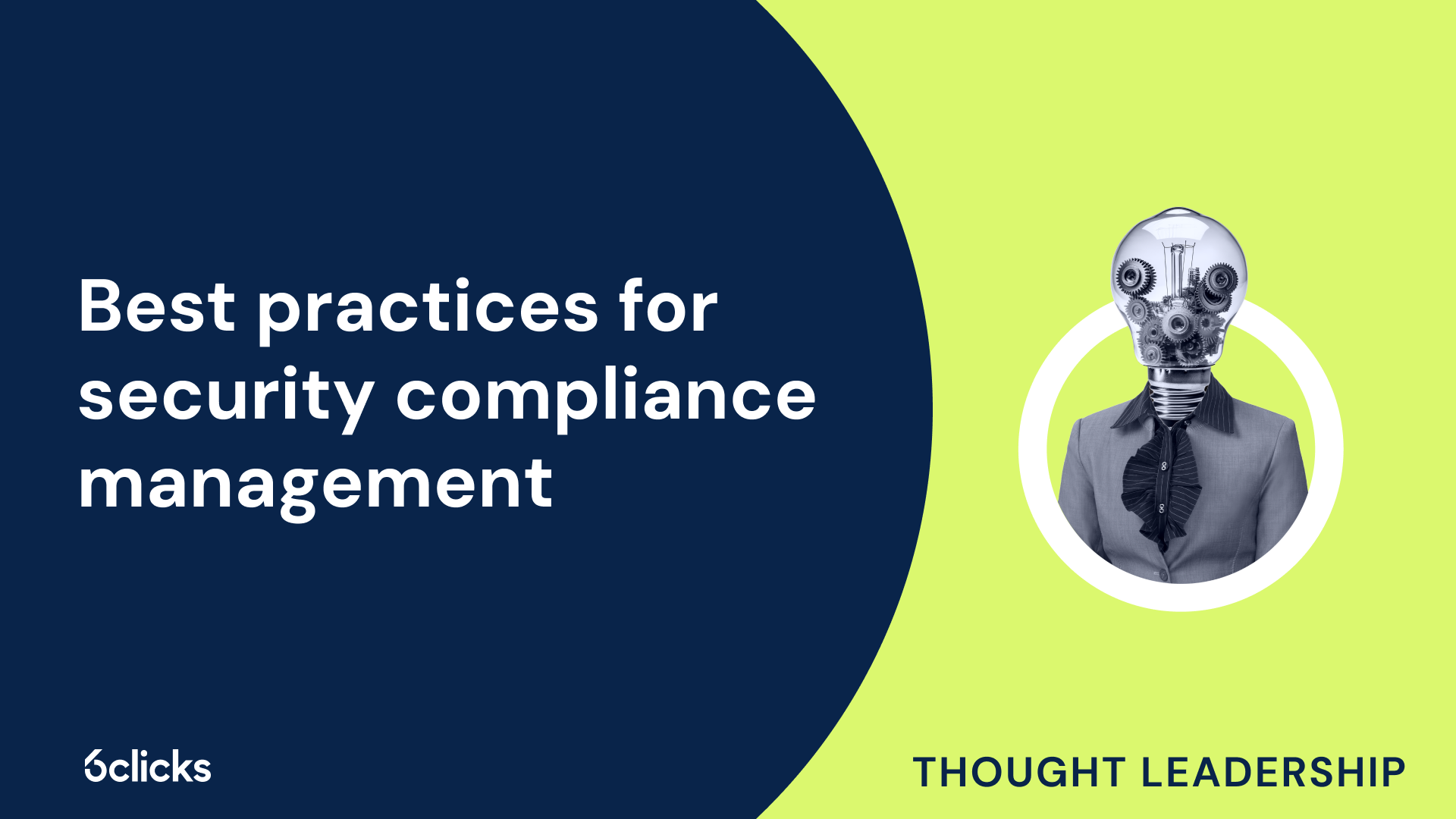
Becoming ISO 27001 and NIST CSF compliant can help you build a robust security compliance program and facilitate your organization’s compliance with other laws and regulatory requirements such as those from the Digital Operational Resilience Act (DORA).
Here are some best practices for effective security compliance management:

Understand the organization’s compliance requirements
To be able to fulfill its compliance obligations, an organization must have a deep understanding of its organization, environment, and the laws and regulations that impact its business. This entails examining the context of the organization, including its nature of business, location, stakeholders, customers, and operations, to identify all relevant and applicable regulatory obligations. Organizations must also have a thorough grasp of information security requirements specific to different countries and industries, such as the Australian Information Security Manual (ISM) and the Cybersecurity Maturity Model Certification (CMMC) in the US defense sector.
Define the scope of the security compliance program
Once you have determined your regulatory obligations, your organization can proceed to define the scope of your security compliance program, outlining your desired outcomes and the specific requirements it will address. It also includes putting in place policies and controls to eliminate or mitigate risks to your organization’s data, assets, systems, and operations. A security compliance management program must have both security controls like firewalls and data encryption, and compliance controls such as incident response plans and regular audits and assessments. Organizations must also assign roles and responsibilities to personnel who will oversee, implement, and report the effectiveness of the security compliance program.
Establish risk management procedures
A security compliance management program should also contain the steps of an organization's risk management process. Organizations must take a continuous approach to risk assessment and repeatedly identify risks and vulnerabilities and evaluate them based on their level of impact and likelihood. They must also be recorded and updated according to their stage in the risk management process. Organizations must then formulate risk treatment plans to determine whether a risk can be eliminated completely or simply contained. Finally, risks must be continuously monitored and reviewed to identify new risks and manage existing ones, therefore completing the cycle.
Build a strong security culture
Developing a strong security culture is the key to achieving a mature security posture. It involves embedding security practices at the heart of your organizational culture, making security a priority in daily operations, and instilling it in the everyday working habits of all employees. This includes creating, enforcing, and communicating policies and procedures across the organization, fostering active engagement from all departments in security compliance activities, and conducting regular security awareness training programs to equip your employees with knowledge and tools to successfully fight cyber threats.
Ensure monitoring and improvement
Lastly, frequently testing and monitoring security measures and risk management activities allows your organization to proactively address areas of non-compliance, carry out corrective actions, and continuously improve security compliance. The best way to examine and verify your compliance is to conduct regular internal audits to ensure that risk management procedures are effective and security controls are operating as intended. Organizations must also stay updated with changes in regulatory requirements and adjust their security compliance program accordingly.
6clicks’ Security Compliance Management solution
The 6clicks platform is built to help you develop a security compliance management program that can meet your organization’s specific needs.
From regulatory content like the Digital Operational Resilience Act (DORA) to assessment templates for security frameworks like ISO 27001, 6clicks provides a comprehensive suite of tools and solutions tailored to support diverse requirements across industries and jurisdictions.
Secure multi-framework compliance, store and manage your policies and controls, and automate control testing, compliance mapping, and policy gap analysis through 6clicks’ Security Compliance solution.
Assess and organize your risks in the risk register, utilize custom workflows to automate risk assessment, and assign actions to team members and track the status of treatment plans, all within 6clicks’ IT Risk Management module.
Then, streamline internal audits with 6clicks’ Audit and Assessment and reporting templates. 6clicks’ AI engine, Hailey, can also generate assessment responses instantly by learning from and reusing previous data, significantly expediting the audit process.
Finally, fulfill other security compliance requirements using 6clicks’ Asset Management, Issues and Incident Management, and Vendor Risk Management features.



